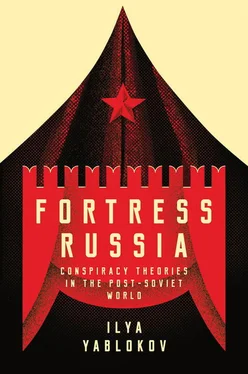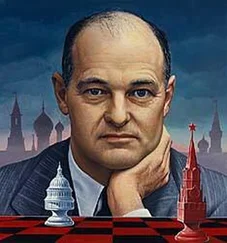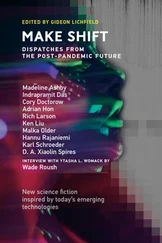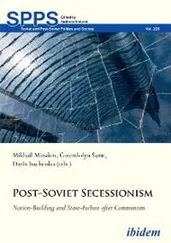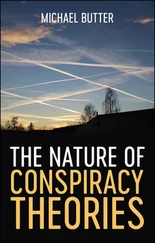Some forgeries which support the supposed existence of conspiracy against Russia are used to denounce individuals who were supposedly interested in bringing about the collapse of the Soviet Union. One of these is a speech supposedly delivered by Gorbachev at the American University in Turkey in 1999, and published in the Slovakian newspaper Ušvit : Tsel’iu moei zhizni bylo unichtozhenie kommunizma ( The aim of my life was the destruction of Communism ) (Gorbachev, n.d.). Russian translations of this document always refer to this issue of the Slovakian newspaper, and often to its subsequent publication in the Russian newspaper Sovetskaia Rossiia . Another forgery is a speech supposedly delivered in November 1991 by Margaret Thatcher, in Houston, at a meeting of the American Petroleum Institute, entitled Sovetskii Soiuz nuzhno bylo razrushit’ ( The Soviet Union had to be destroyed ). The third is a report allegedly delivered by the US President Bill Clinton at a meeting of the Joint Chiefs of Staff in 1995, which supposedly confirms US involvement in the Soviet collapse (Amerikanskie politiki o budushchem Rossii, n.d.).
A preliminary analysis of these documents demonstrates that the speeches were neither delivered, nor published as claimed. There was no article about Gorbachev’s speech in the Slovakian newspaper Ušvit . Although the newspaper did exist, it had a very limited circulation even among Slovakian Communists and it is unlikely that it was known in Russia. It was, however, published in the conservative, Communist party newspaper Sovetskaia Rossiia. Margaret Thatcher did not give a speech at the meeting of the American Petroleum Institute; indeed, the supposed speech was on a topic which would have been completely irrelevant to that conference. Her official website lists the speeches she has given, and there is no suggestion that she even participated in this meeting (Margaret Thatcher Foundation, n.d.). Bill Clinton’s supposed speech, in terms of content and linguistic details, resembles The Dulles Plan, and has also never been published anywhere but in post-Soviet conspiratorial literature.
Russian politicians and conspiracy theorists continue to refer to these documents to demonstrate the evil intentions of Western politicians towards Russia (Kazintsev, 2001), and to undermine the decisions of acting political leaders. In the 1990s, Yeltsin’s opponents often used a negative image of the Russian president to delegitimize his policies and gain the support of both the national patriotic and Communist electorate (March, 2002). The claim that there were real political leaders – both Russian and foreign – who were proponents of anti-Russian conspiracy was the main feature of this use of forged documents. These forgeries helped to attract supporters by appealing to their emotions; naming real politicians instead of expressing generalized hatred towards the West is more effective as it helps to make conspiratorial claims sound more persuasive (Fedor, p. 849).
Competing Interpretations of the August Coup
There are two different conspiratorial interpretations of the August 1991 coup which have competed throughout the post-Soviet period. The first was disseminated by Yeltsin’s administration as the official explanation of the events. It treats the attempted coup as a plot by conservative forces in the Soviet government against the democratically elected authorities of Russia and an attempt to nullify the democratic achievements of perestroika . In contrast, the citizens of Moscow, who came to the Supreme Soviet building on 19 August and helped defend it from the GKChP , were members of civil society and were fighting for freedom and democracy.
From the start of the coup, Yeltsin referred to GKChP members as ‘plotters’. This word was subsequently used by Gorbachev and by those who participated in the events, whose accounts were published during the investigation of the coup (Gorbachev, 1991; Stepankov and Lisov, 1992; Yeltsin, 1994). Soon after the coup’s failure, members of the GKChP were arrested and charged with treason. Later, another charge was levelled at them: conspiracy aimed at the seizure of power. The labelling of the GKChP as conspirators allowed pro-Kremlin speakers to divide Soviet society at the time of the coup into ‘the people’ and the powerful ‘Other’ – the conservative bloc in the Communist Party and the Soviet government. The victory of Yeltsin’s supporters over the alleged ‘conspirators’ provided Yeltsin’s team with arguments to justify their actions during and after the coup.
This official version of events presents a coherent narrative; a conspiratorial reading of the coup helps lay the foundations of national cohesion by depicting this moment of history as the birth of the new democratic Russian state. On the first anniversary of the coup, Yeltsin praised Muscovites for having resisted the GKChP and congratulated ‘the new Russia… that could overcome its old instinct of resigned submissiveness’ (quoted in Smith, 2002, p. 33). Gennadii Burbulis, then Secretary of State, drew a clear line between the new, progressive Russians and the plotting retrogressive minority:
I stand in awe of and admire those who demonstrated… an uncompromising devotion to freedom, and, thus, gave support to the president and to all of us, and [I feel] appalling sadness and am grossly insulted… by those who acted according to their repressive… worldview in such a fascist, conspiring manner. (Kommersant-Vlast, 1992)
This pro-Yeltsin version of the August coup is challenged by an alternative version in which it is presented as the last stage in the ‘Western plan’ to destroy the greatness of the Soviet state and put it under the control of foreign governments who wish to plunder its wealth. Foreign conspirators were acting in league with Gorbachev to influence the liberal intelligentsia in the Soviet Union and turn them into a ‘fifth column’ aimed at corrupting Soviet ideology during perestroika (Legostaev, 2002).
Other explanations for the August events were published in the following years. They vary significantly in accordance both with the ideological views and beliefs of the authors, and the extent of their involvement in present-day politics. Many of them are members of the GKChP , or the conservative opposition of the 1990s, and are supporters of Communism. Not withstanding their differences, most of the authors consider the August coup to have been a response to perestroika; at the same time, it created an interlude before the onset of Yeltsin’s reforms. Perestroika , the August coup and the radical economic reforms of the 1990s hence merged into a single narrative of an anti-Russian plot masterminded in the West. This interpretation served as a powerful tool to win over Russian voters, most of whom found the economic reforms extremely painful.
In fact, even before the coup took place, the grounds for an alternative reading of it had already been set out. The idea that foreign powers were plotting to destroy the Soviet Union had surfaced early in 1991. Vladimir Kriuchkov, head of the KGB, stated several times that CIA agents abounded in the USSR and were working hard to push the country towards catastrophe (Shved, 2013). In February 1991, Valentin Pavlov, the last Soviet Prime Minister, claimed that he was introducing financial reforms in order to prevent Western banks subverting the Soviet economy. According to Pavlov, these banks were aiming to cause hyperinflation by pouring seven to eight billion roubles into the Russian economy (Golovachev, 2012). Later, during a meeting with West European businessmen, Pavlov apologized for these words and emphasized that he did not mean to file claims against ‘solid businessmen’. However, he did insist that ‘improper businessmen had ambitions to undermine perestroika ’ (Kommersant, 1991).
Читать дальше
Конец ознакомительного отрывка
Купить книгу
